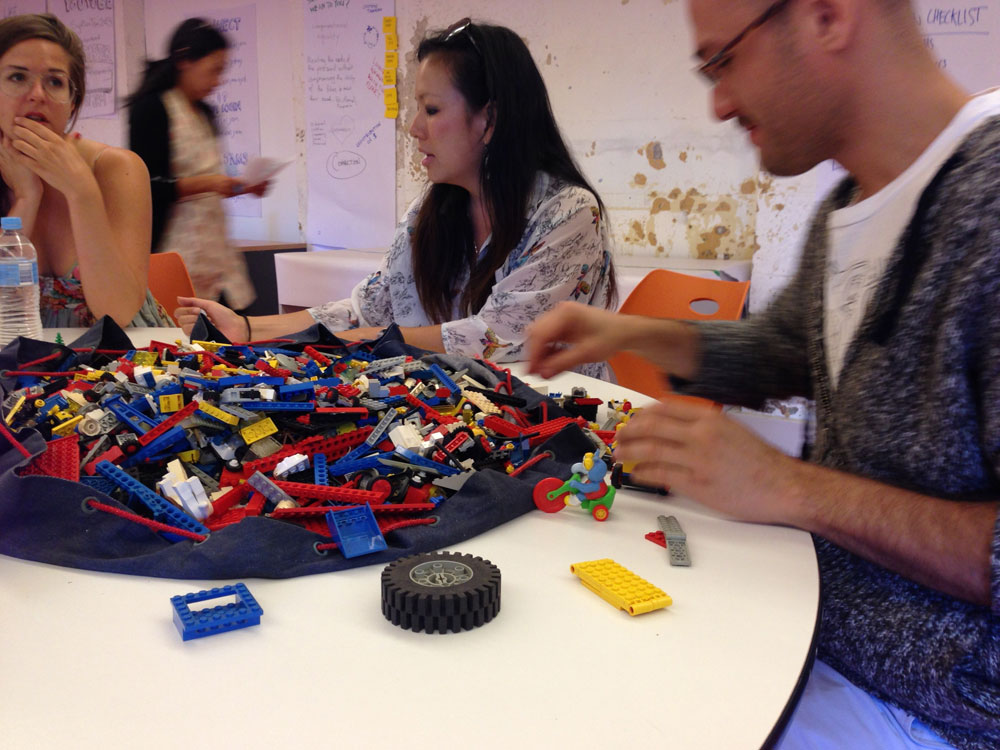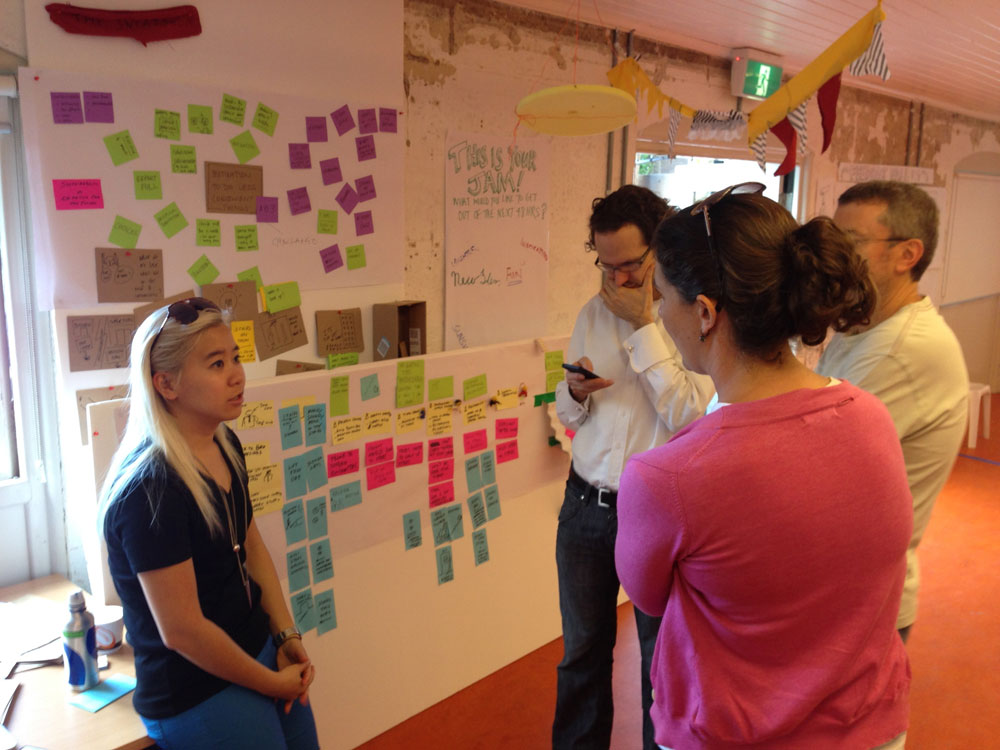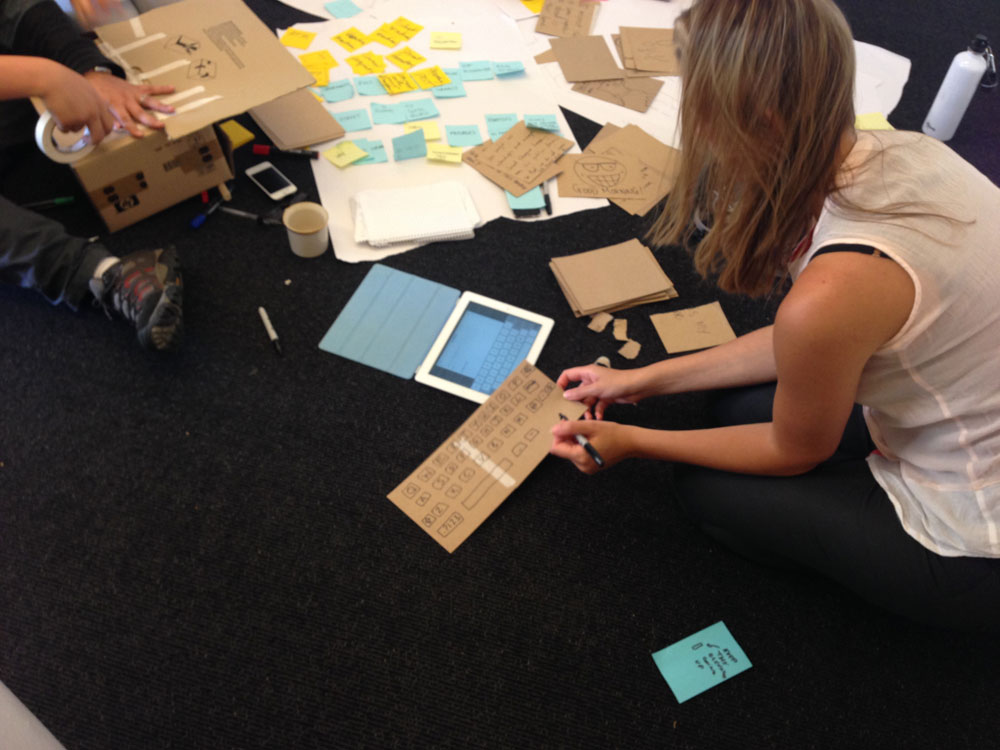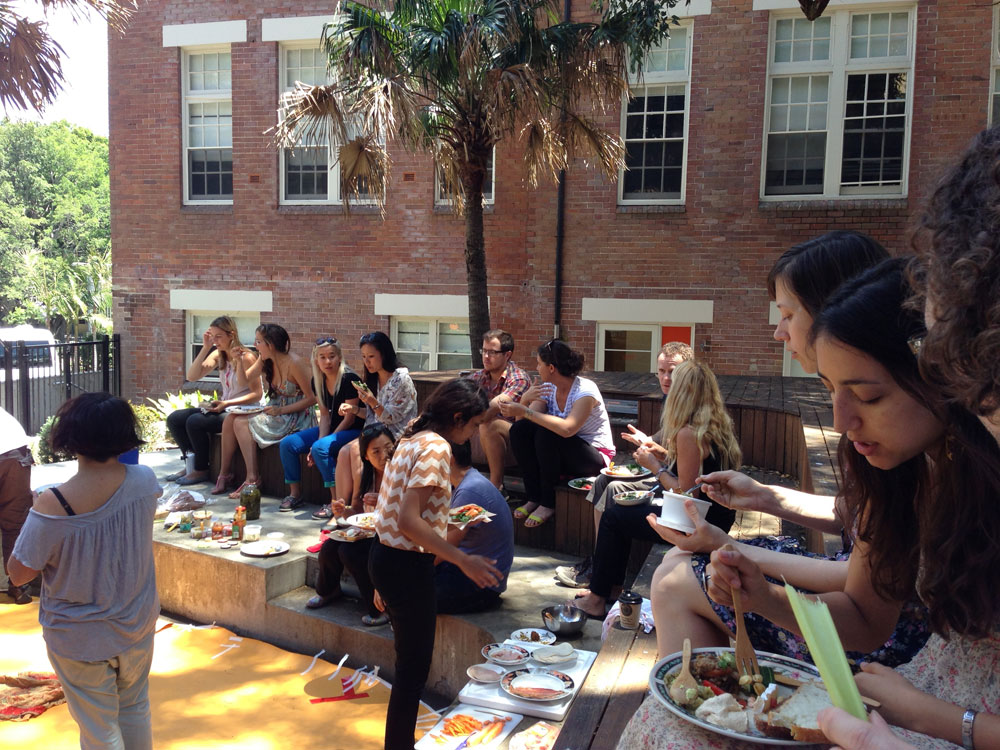Fieldnotes: Global Sustainability Jam Sydney – '48 hours to save the world'
'48 hours to save the world' – that’s the Global Sustainability Jam tagline. It’s admittedly ambitious, but at the same time surprising what can actually be accomplished over a single weekend. A ‘jam’ – or more correctly in this context ‘design jam’ – is a design-based approach to creativity and problem solving. Something like in jazz music where people come together to create something without a specific end-plan – a bit organic and improvised – but here using a design methodology with the aim to create a product or service addressing the broad goal of sustainability.
I attended the 2013 Sydney Sustainability Jam which ran over a full weekend in November. It was a great event with about 30 people from varying backgrounds taking part. My involvement was driven both by my research interests and by the fact that collaborative workshops like these are a good way to meet like-minded people and have fun doing so. I used use the Jam as a way of scoping how I might engage with similar projects for my fieldwork as I was interested how such open and experimental spaces operate and provide ways to think about complex global issues – particularly the climate-changed and unnatural futures facing us.
Initially I considered helping to organise and run the event, but decided to sign up as a participant. I wanted to see how difficult it was to manage being both a participant and observer. The answer: difficult but manageable. The event is short and intense – lots to discuss and get done on the project itself. Taking detailed field notes while engaging with the Jam group proved to be difficult. But what also became evident was that my level of interest was not behavioural detail or in specific interactions but more about process and meta process. That turned out easier to reflect on later when I had time to myself.
So what’s the process of a design jam? It usually starts off with a few short talks to set the scene and provide inspiration – in this case talks about design thinking, but also sustainability. Next, a collaborative exercise to identify common-interest sustainability themes, and then forming groups around these. After some brainstorming as a way to pare-down the core ‘problem’ we were thrown a small ‘spanner’ in the guise of a unique theme for the jam – in this case ‘AB3’. The idea was to use this as a way to think differently about how to approach the specific group problem. And that’s where the evening of the first day ended.
The rest of the weekend followed a similar pattern, being guided through the design process, stimulated by short presentations, playful group exercises, continued brainstorming and development of ideas, and various forms of performative-style research. The second full day focused on ‘defining the problem’, which involved first exploring what that ‘problem’ was. To get out of our heads and our own biases we were ushered outside to find the problem in the ‘real world’ engaging with people and the environment. The second half of the day was spent using research findings to help better define the problem – a process of synthesis. At the end of the day we presented brief summaries of insights gained. Again we were urged into performative presentations, acting out user experiences or journeys and how we envisaged our projects engaging these.
The third day focused on the actual ‘design’ process. For the first half of the day more divergent activities: rapid prototyping and real-world testing of ideas to see if they worked as intended and gather feedback. The latter part of the day then turned to final concept refinement and development of a summary presentation.
The end results from the weekend were all very engaging and, as I’ve said, surprising in that they were only developed over 48 hours. Collaborative work can be tricky, especially if you don’t know the people you’re working with and they have different disciplinary backgrounds. Framing the process in a positive way – being open and saying ‘yes’ to ideas – appeared to be an important component of effective group working process. At times, however, it felt dangerously close to ‘group-think’, where mediocre suggestions aren’t questioned because of the affirmative culture. Likewise, a lack of critical analysis applied during the process can problematically lead final outcomes being less than robust as practical solutions for real-world problems.
So, while it’s impressive what can come out of only 48-hours of work, at the same time this constraint would appear the limit the depth and complexity that can be adequately grappled with. This is both with understanding issues but also fully understanding the design research process. A 10-minute talk on design thinking does not suddenly make someone an adept design researcher. For some the Jam appeared to be their first encounter with this type of creative and collaborative process, so there was lots of slippage – though this was helped by others who had previous design experience.
For myself, stepping in from an academic research background, the action research approach was somewhat refreshing. Rather than starting with theoretical investigation before empirics, just getting out there to see what’s going on and rapidly ‘pretotyping’ proves very fruitful. In a more formal research setting you’d obviously have a better mix of the two – as well as engage a process of analysis and feedback during project development.
The other issue that struck me as we dove into field research was that of ethics. Currently being in the process of having to complete detailed ethics clearance with my own research (just for doing basic interviews), I was a little unsettled by sensitive issues that some groups engaged with – homelessness or the elderly for example – and the way that people in those groups were approached without substantive understandings of both the issues themselves or what the potential impacts could be. But at the same time – and this was an issue that came up in discussion at recent doctoral presentations – we engage with people all the time and impact their lives, often without conscious regard of ‘ethics’. As well, I’m often surprised at what commercial marketing and advertising can get away with – if we want to talk critically about impacting people’s lives. Anyhow, I think all we can say is that the Jam groups had good intentions in mind, and that most people – from whatever walk of life – are pretty enthusiastic and, on the most part, happy to have someone interested in and to chat about their lives and the issues they face.
So, what do I take away from the Jam experience? On a personal level it was great to connect with others who are interested in the broad issue of sustainability and explore new ways of addressing this. The Jam was a well-held space for this activity and underscored the value of openness and play as powerful modes of engagement with both issues and other people. It’s also a great way to rapidly explore ideas, to rapidly test things out and feel comfortable in failing. Failing is good – obviously the more and sooner the better... not at the end! Being agile with the kinds of research you do is part of this – simple and immediate – and using different ways of encoding research in tangible ways that people can try and use or talk to. Theoretical questions are limited in finding out how people will actually respond, better to see how they react to a prototype.
As far as my research project, the Jam experience helped me refine how I think about experimental spaces that are attempting to grapple with climate-changed futures. Sustainability implies thinking about the future – how we manage resources and human activity over the longer term. I’m interested in ways that help us to step outside normative modes of thinking and engage with radical reimaginations of what the future might be and how we might respond in quite different ways. Unfortunately, I didn’t find the the Sustainability Jam very effective in approaching this.
What the process seemed to create were certainly interesting ideas, but which lacked rigour and depth, as well as the ability to address the inherent complexities. For me this critical observation was a useful one. In the field of creative thinking there is an operational divide between imagination, creativity and innovation. Imagination is the more speculative of these, defined as the process of bringing things to mind that aren’t present. Creativity on the other hand is focused on coming up with new ideas, and innovation is all about putting these into practice – think taking your idea ‘to the market’. This is useful to consider when we want to think differently about futures and adapting to conditions that may be difficult to imagine. Time and timescale become important. We’re not just considering what problems there are now but what they might be in near or distant futures. If we were to consider, for example, designing things or systems to last for 100, 1,000 or perhaps even 10,000 years – how would we do that? How also do we think systemically – grapple with complex social ecological systems, the interconnectedness of agents and networks – and then consider designing with these in mind? And how might we rethink human-centric design to acknowledge our more-than-humaness? But as well we need to be able to do this while keeping in mind the inherent uncertainty and forecast volatility that the future holds. Very challenging!
Such thinking, however, forces us to step outside our current modes of engagement and consider issues and entanglements we normally wouldn’t – or perhaps can't easily. This becomes a much more complicated issue, and one which calls upon the power of imagination, or more appropriately reimagination. This kind of thinking lies beyond the scope – and aims – of the Sustainability Jam.
The 'design' approach, however, remains useful in other ways: it helps expand thinking beyond that highly conceptual and theoretical; and agile and performative approaches are very effective in practically and rapidly developing and testing ideas. These are useful ways to respond to volatile circumstances and, given current planetary forecasts, we will increasingly need effective methods to address emerging issues.
[Images @NICE/Grant Young]




